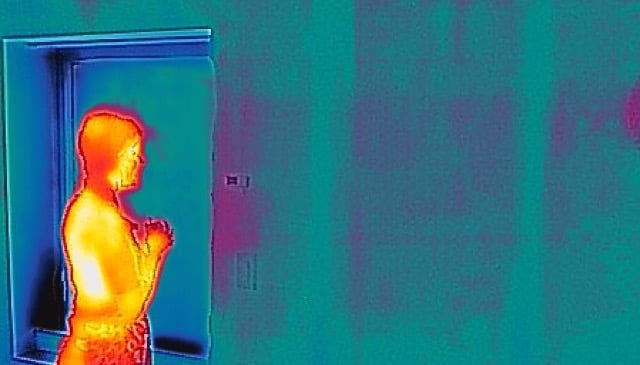Selling a zero energy home is about selling its advantages. While there are many benefits to zero energy homes, including of course energy savings, one of the biggest selling points is comfort. Most people don’t have a good understanding of home comfort, which is affected by four factors: air temperature, air movement, relative humidity and radiant temperature. That last factor, radiant temperature is the least understood, so let’s dig into it.
You probably don’t want to hear that your thermostat is lying to you. You think that you can set that number on the wall to 70 degrees and that you will be comfortable. It’s the only control that most homes have, so it must work… right? It’s not so simple. Comfort is indeed affected by air temperature, but that’s not the half of it.
To be clear, let me back up and explain that heat moves in three ways: conduction, convection and radiation. All three methods affect comfort. If your feet touch the cold tile in the bathroom, they are losing heat by direct contact with the cold floor. That’s conduction. If you feel a cold draft blowing over your skin, you’re losing heat to the moving air. That’s convection. And when you sit next to (but not touching) a cold window, you’re losing heat to the surface of the glass. That’s radiation.
Technically, radiation is the movement of heat from a warmer object to a cooler object. When we talk about comfort, it is we the people that are the warm objects. We constantly lose heat to all the surfaces around us. People generally feel comfortable when the surrounding surfaces are in the mid-60 degrees F.

Warm bodies radiate heat to cooler surfaces around them. Zero energy homes are more comfortable, because surrounding surfaces hover closer to the comfort range.
Comfort is better in tight, well-insulated buildings. Zero energy homes represent the epitome of comfort. Right now, I’m writing these words from my zero energy home. I’m standing at my desk in shorts and a t-shirt. It’s cold and rainy outside and yet the heating system is off. The surfaces around me are 75 degrees. The ceiling is well insulated to R-60 and the 10-inch-thick walls are about R-40. On top of that there are no cold drafts to steal heat and make surfaces cold. Comfort is all about an air tight, well-insulated shell.
The same process works in reverse for keeping cool. When your body is surrounded by cooler surfaces, you feel cooler, too. Night flush cooling takes advantage of this principle to reduce the need for mechanical cooling. Even commercial buildings employ radiant cooling by circulating chilled water through wall and ceiling panels.
Research shows that comfort is a top priority for home buyers and zero energy homes deliver. Adding this element to your sales pitch, will help you make the sale.


Allen Chen says:
Read lots of article about green building and zero net building, passive house is making much sense to me
they replaced traditional furnace to heat pump or renewable energy or HRV (heat recovery ventilation system). Of course it is air tight and well insulated shell.
My question is will that be the trend, radiant heat/cool, no furnace ?
Can someone share comments ?
Thanks
Allen
Bruce Sullivan says:
Passive House is a good example of the trend: no central heating. Tons of insulation, extensive air sealing, and high-tech windows create a building that needs very little heating or cooling. The early Passive House approach involved a small duct heater in the HRV supply to the house. These were about the size of a hair dryer. With advances in heat pump technology and lower cost photovoltaic (solar electric) panels, it’s now possible to achieve zero energy with a less robust building shell. I believe each home design should be cost-optimized using an energy model to determine the right amount of insulation and window efficiency to reach the zero energy goal. You can learn more about energy modeling here:
https://zeroenergyproject.com/build/twelve-steps-affordable-zero-energy-home-construction-design/use-energy-modeling-cost-effective-zero-energy-home/